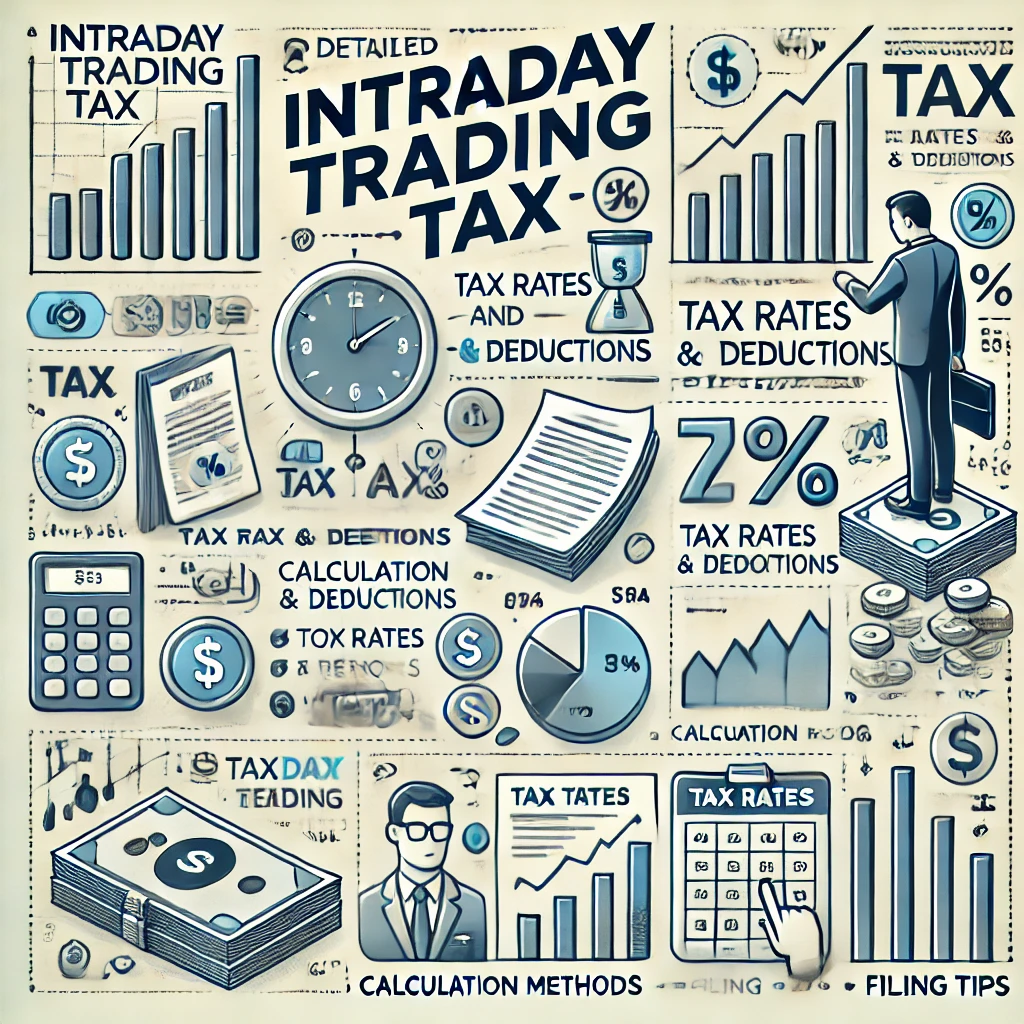Intraday trading has gained significant popularity in India, largely due to its potential for high returns in a short period. Intraday trading refers to buying and selling stocks within the same trading day. It offers tantalizing prospects for quick profits but also comes with its own complexities, especially in terms of taxation. This article delves into the nitty-gritty of intraday trading tax in India, providing a comprehensive guide to understanding the nuances of day trading taxes.
Understanding Intraday Trading Taxation
Nature of Intraday Trading
Intraday trading transactions are treated distinctly by the tax authorities in India. Unlike long-term investments, intraday trades do not involve the delivery of shares. Instead, these transactions are squared off within a single trading day. Therefore, profits generated from intraday trading are classified under the category of speculative income.
Tax Treatment of Speculative Income
The profits from intraday trading are categorized as speculative business income under the Income Tax Act, 1961. This classification has several implications for how intraday traders must report their income and pay taxes. Here are the primary aspects:
- Taxation Slab: Unlike capital gains, which have specific tax rates, speculative income is taxed based on the individual’s income tax slab. The slabs for the financial year 2023-24 are as follows:
– Income up to INR 2.5 lakh: Nil
– Income from INR 2,50,001 to INR 5 lakh: 5%
– Income from INR 5,00,001 to INR 10 lakh: 20%
– Income above INR 10 lakh: 30%
- Filing Requirements: Intraday traders must report their speculative income under the head “Profits and Gains from Business and Profession” in their income tax returns.
- Losses: One critical aspect to understand is how losses are treated. Speculative losses can only be offset against speculative gains and can be carried forward for up to four years. This means that if an intraday trader incurs a loss, they cannot offset it against other forms of income like salary or regular business income.
Calculating Intraday Trading Tax
Scenario 1: Profit Calculation
Let’s assume Raj, an intraday trader, made the following trades in a financial year:
– Profit from Trade 1: INR 30,000
– Profit from Trade 2: INR 50,000
– Loss from Trade 3: INR 20,000
Total Speculative Income = (Profit from Trade 1 + Profit from Trade 2) – Loss from Trade 3
= (INR 30,000 + INR 50,000) – INR 20,000
= INR 60,000
Raj’s total speculative income is INR 60,000. Given that Raj’s total annual income, including his salary, falls into the 20% tax slab, his tax liability would be as calculated:
Tax on Profits: 20% of INR 60,000 = INR 12,000
Scenario 2: Loss Carry Forward
If Raj had only losses in intraday trading:
– Loss from Trade 1: INR 30,000
– Loss from Trade 2: INR 50,000
– Profit from Trade 3: INR 20,000
Total Speculative Loss = (Loss from Trade 1 + Loss from Trade 2) – Profit from Trade 3
= (INR 30,000 + INR 50,000) – INR 20,000
= INR 60,000
Raj can carry forward this loss of INR 60,000, and up to the next four years, it can be offset against any speculative income earned.
Additional Aspects of Intraday Trading Taxation
Beyond the standard tax calculations, there are other aspects to be aware of:
1. Turnover Calculation:
For tax audit purposes, the turnover in intraday trading is calculated as the sum of the positive and negative differences. This method is essential for determining whether a tax audit is required under Section 44AB of the Income Tax Act.
2. Tax Audit:
If the total turnover from intraday trading exceeds INR 1 crore, a tax audit is mandatory. However, the threshold is increased to INR 10 crores if more than 95% of the total payments are made through banking channels.
Intraday Trading for Beginners: Essential Tax Tips
For those interested in day trading for beginners Here are a few crucial points to consider when starting with intraday trading.
1. Maintain Accurate Records:
Keep meticulous records of all your trades, including profits and losses. Proper documentation will simplify tax filing and help in claiming expenses.
2. Consider Advance Tax:
If your tax liability is likely to exceed INR 10,000 in a financial year, you must pay advance tax in four installments (15%, 45%, 75%, and 100%).
3. Expenses Deduction:
As an intraday trader, certain expenses directly related to your trading activities, such as internet bills, advisory fees, and broker commissions, can be deducted from your speculative income. Make sure to keep receipts and invoices for these expenses.
Conclusion
Intraday trading taxation in India requires a careful understanding of how speculative income is treated under the Income Tax Act. By keeping accurate records, understanding your tax obligations, and planning accordingly, you can navigate the complexities of intraday trading tax effectively. Always remember to consult with a tax advisor to ensure compliance with all tax regulations and to optimize your tax position.
Disclaimer:
This article is intended for informational purposes only and does not constitute financial or tax advice. Intraday trading involves significant risk, and it is essential for investors to gauge all the pros and cons before engaging in trading activities in the Indian stock market. Always consult a certified financial advisor or tax professional to understand how these matters pertain to your specific situation.
